Chirality-Induced Hydroxyapatite Manipulates Enantioselective Bone-Implant Interactions Toward Ameliorative Osteoporotic Osseointegration
- PMID: 39738981
- PMCID: PMC11848601
- DOI: 10.1002/advs.202411602
Chirality-Induced Hydroxyapatite Manipulates Enantioselective Bone-Implant Interactions Toward Ameliorative Osteoporotic Osseointegration
Abstract
Inspired by the fundamental attribute of chirality in nature, chiral-engineered biomaterials now represent a groundbreaking frontier in biomedical fields. However, the integration of chirality within inorganic materials remains a critical challenge and developments of chirality-induced bionic bone implants are still in infancy. In this view, novel chiral hydroxyapatite (CHA) coated Ti alloys are successfully synthesized by a sophisticated chiral molecule-induced self-assembly method for the first time. The obtained samples are characterized by stereospecific L-/D-/Rac-chiral hierarchical morphology, nanotopography rough surfaces, improved hydrophilicity, and bioactivity. Following implantation into rat femoral condyle defects, the distinct stereospecific chiral hierarchical structures exhibit highly enantioselective bone-implants interactions, wherein the left-handed chirality of L-CHA strongly promotes osteoporotic osseointegration and vice versa for right-handed chirality of D-CHA. Consistently, in vitro assays further validate the superior enantiomer-dependent osteoporotic osseointegration ability of L-CHA, mainly by manipulating desired immunomodulation coupled with enhanced neurogenesis, angiogenesis, and osteogenesis. Moreover, as analyzed by transcriptomic RNA-seq, a new discovery of down-regulated IL-17 signaling pathway is considered predominately responsible for the desired immunomodulation ability of L-CHA. These results provide new insights into biological multifunctionality and mechanism underlying L-chirality's roles for bone healing, thus may inspiring developments of new generation of chiral biomaterials.
Keywords: chirality; enantioselectivity; hydroxyapatite; immunomodulation; osteoporotic osseointegration.
© 2024 The Author(s). Advanced Science published by Wiley‐VCH GmbH.
Conflict of interest statement
The authors declare no conflict of interest.
Figures

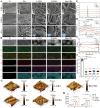
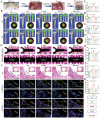
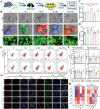
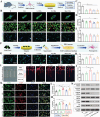


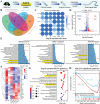
Similar articles
-
Calcium-phosphate-coated oral implants promote osseointegration in osteoporosis.J Dent Res. 2013 Nov;92(11):982-8. doi: 10.1177/0022034513505769. Epub 2013 Sep 20. J Dent Res. 2013. PMID: 24056224
-
Controlled Delivery of Curcumin and Vitamin K2 from Hydroxyapatite-Coated Titanium Implant for Enhanced in Vitro Chemoprevention, Osteogenesis, and in Vivo Osseointegration.ACS Appl Mater Interfaces. 2020 Mar 25;12(12):13644-13656. doi: 10.1021/acsami.9b22474. Epub 2020 Mar 13. ACS Appl Mater Interfaces. 2020. PMID: 32013377 Free PMC article.
-
Electrochemical Deposition of Nanostructured Hydroxyapatite Coating on Titanium with Enhanced Early Stage Osteogenic Activity and Osseointegration.Int J Nanomedicine. 2020 Sep 8;15:6605-6618. doi: 10.2147/IJN.S268372. eCollection 2020. Int J Nanomedicine. 2020. PMID: 32982221 Free PMC article.
-
Synthetic nanointerfacial bioengineering of Ti implants: on-demand regulation of implant-bone interactions for enhancing osseointegration.Mater Horiz. 2025 Feb 3;12(3):694-718. doi: 10.1039/d4mh01237b. Mater Horiz. 2025. PMID: 39480512 Review.
-
Titania nanotubes for orchestrating osteogenesis at the bone-implant interface.Nanomedicine (Lond). 2016 Jul;11(14):1847-64. doi: 10.2217/nnm-2016-0169. Epub 2016 Jul 7. Nanomedicine (Lond). 2016. PMID: 27389393 Review.
References
-
- Zhao Y. N., Kang H. L., Wu X. P., Zhuang P. Z., Tu R., Goto T., Li F., Dai H. L., Adv. Healthcare Mater. 2023, 12, e2203099. - PubMed
MeSH terms
Substances
Grants and funding
LinkOut - more resources
Full Text Sources
Medical
Miscellaneous
